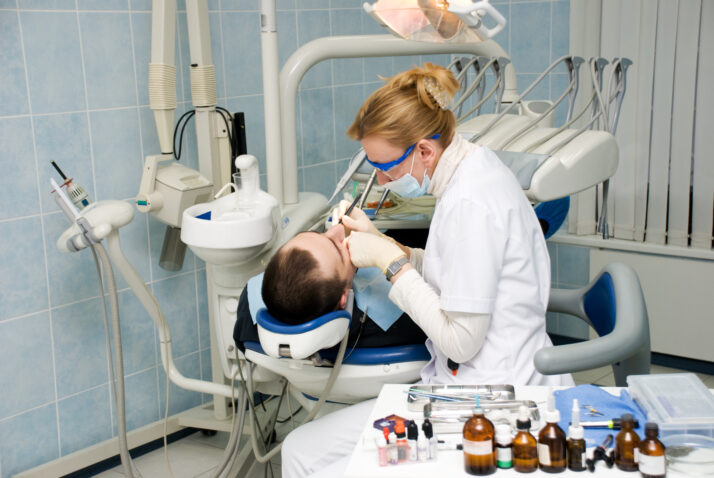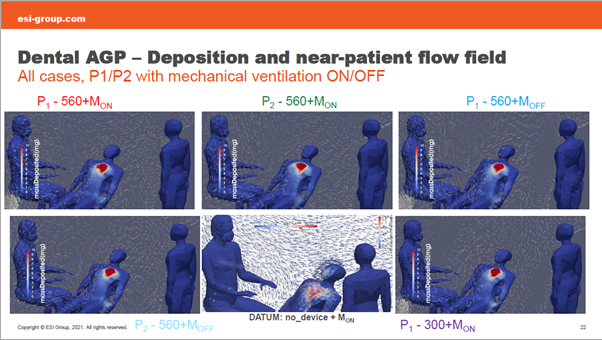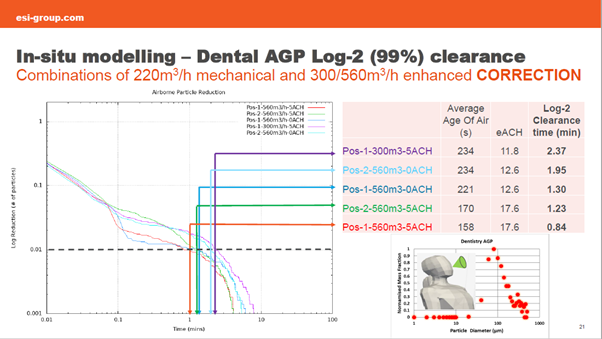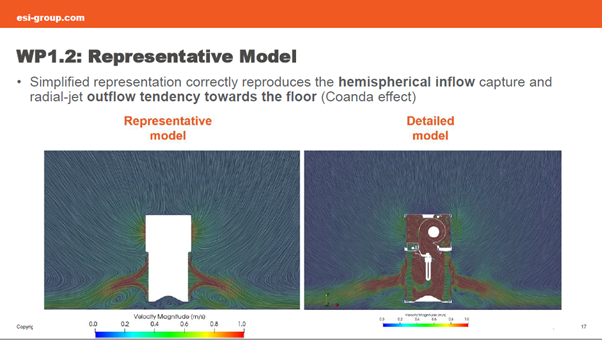Update to dentist’s fallow time guidance (UK)

Die Pandemie hat sich erheblich auf den Patientendurchsatz in Zahnarztpraxen ausgewirkt. Zwar wurden die Schließungen aufgehoben, aber die Wartezeit – die Zeit, in der ein Behandlungsraum nach einer Aerosolerzeugung (AGP) leer bleibt, damit sich Tröpfchen oder Aerosole in der Luft absetzen können – sorgt weiterhin für lange Wartelisten.
The UK government’s January 17 2022 ‘COVID-19: infection prevention and control dental appendix‚ to its broader guidance on ‘Infection prevention and control for seasonal respiratory infections in health and care settings (including SARS-CoV-2) for winter 2021 to 2022‚ provides an update on post AGP downtime for dental practices.
Poor Belüftung extends fallow time. Bei 10 oder mehr Luftwechseln pro Stunde (ACH) wird eine grundlegende Ausfallzeit nach der AGP von 15 Minuten empfohlen. Bei 6 bis 9 ACH erhöht sich diese Zeit jedoch auf 20 Minuten und bei 1 bis 5 ACH oder bei unbekannter Ventilationsrate auf 30 Minuten.
In a standard 30m3 dentist surgery room (4x3m with normal ceiling height), an air purifier capable of cleaning 560m3 per hour would change the air 18 times an hour (18 ACH). That means a dentist can operate with the minimum 15 minute fallow period, substantially increasing patient throughput.
Assuming that a single surgery room is utilised for 8 hours a day, with 30 minutes allocated to each appointment, then a 30-minute fallow period would allow 8 appointments per day. Drop the fallow period to 15 minutes und die number of patients seen per day increases to 11 appointments. Over a period of one working week, that equates to 15 more patients, or 750+ over a year. Die Kosten und der Nutzen für die Patienten sprechen eindeutig für die Luftreinigung, wobei sich die Investition in einen Luftreiniger in Krankenhausqualität, der die erforderliche Wartezeit um die Hälfte reduzieren kann, schnell amortisiert.
Once the need and ROI has been established, the question of what type of air purifier remains. The Faculty of General Dental Practice (FDGP) UK and College of General Dentistry (CGDent) published an updated guide in October 2020: Implications of COVID-19 for the safe management of general dental practice. The guide recommends air purifiers using HEPA-Filterung or UV irradiation to improve the quality of air within the surgery by removing or diluting contaminated aerosol and thus reducing the risk of contamination.
In addition, the guide recommends that the unit should be positioned close to the source of the aerosol production (i.e. head or foot of the dental chair). The air flow rate, efficiency of air cleaning and size of the room should all be considered, along with maintenance and Sicherheit. Safety is a major concern also voiced by the UK SAGE-Ausschuss, which warns against unproven technologies that rely on chemical reactions and may give rise to harmful toxicological by-products.
Die patentierte Technologie von Rensair combines a hospital-grade H13 HEPA-Filter with an ozonfreiem UVC-Licht to trap and inactivate pathogens. ESI Group recently completed in-situ modelling on the Rensair Luftreiniger within a Birmingham NHS Hospital Dental Treatment Room. Using advanced computational fluid dynamics, the results confirmed very effective air circulation and removal of aerosols generated from AGP procedures. The directional flow of air is critical to the dentist’s own Sicherheit. Deposition and near patient flow field tests demonstrated that the Rensair unit draws aerosols downwards, thereby protecting dentists from infectious particles.


The Rensair unit quickly spreads purified air at 360 degrees in a uniform, outward motion parallel with the floor. This enhances room penetration and encourages toroidal circulation of airflow throughout the space, such that saubere Luft bounces off the walls, then ceiling und dien back into the entire treatment room.

Unverbindliches Angebot anfordern
Teilen Sie uns Ihre Bedürfnisse mit und erhalten Sie innerhalb von 24 Stunden ein Angebot.
Mit Experten sprechen
Buchen Sie ein kostenloses Beratungsgespräch mit einem unserer Experten.
